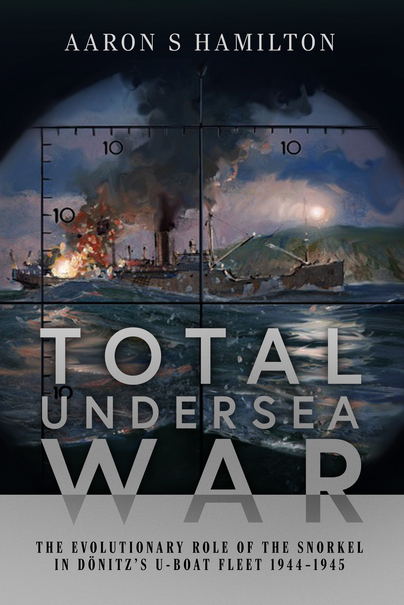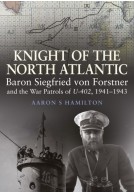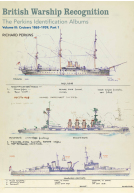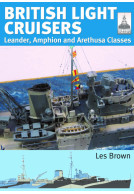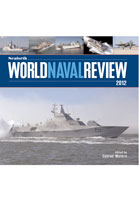Total Undersea War (Hardback)
The Evolutionary Role of the Snorkel in Dönitz's U-Boat Fleet, 1944–1945

Pages: 416
Illustrations: 50 b/w photos and line drawings
ISBN: 9781526778802
Published: 17th June 2020
(click here for international delivery rates)
Need a currency converter? Check XE.com for live rates
| Other formats available | Price |
|---|---|
| Total Undersea War ePub (7.4 MB) Add to Basket | £16.99 |
During the last year of World War II the once surface-bound diesel-electric U-boat ushered in the age of ‘total undersea war’ with the introduction of an air mast, or 'snorkel' as it became known among the men who served in Dönitz's submarine fleet. U-boats no longer needed to surface to charge batteries or refresh air; they rarely communicated with their command, operating silently and alone among the shallow coastal waters of the United Kingdom and across to North America.
At first, U-boats could remain submerged continuously for a few days, then a few weeks, and finally for months at a time, and they set underwater endurance records not broken for nearly a quarter of a century. The introduction of the snorkel was of paramount concern to the Allies, who strived to frustrate the impact of the device before war's end. Every subsequent wartime U-boat innovation was subordinated to the snorkel, including the new Type XXI Electro-boat ‘wonder weapon’. The snorkel's introduction foreshadowed the nearly un-trackable weapon and instrument of intelligence that the submarine became in the postwar world.
This exhaustive study, the first of its kind, draws upon wartime documents from archives around the world to re-evaluate the last year of the U-boat's deployment, all its key technological innovations, the evolving operations and tactics, and Allied countermeasures. It provides answers to many long-standing questions about the last year of the war: How and why did U-boats patrol so close inshore? How effective was acoustic and anti-radar camouflage? Why was U-boat wireless communication so problematic? How did U-boats navigate so effectively submerged? What were the health implications of staying submerged for a month or more? What does an accurate snorkel-configuration look like? This new study is destined to become the authoritative reference for all these issues and many more.
This is a well-researched, engaging, informative and long-overdue discussion of a truly significant aspect of submarine development and warfare. Although its discussion of maritime archaeology is relatively brief, the book demonstrates the utility of archaeological data to historical studies, and showcases how both disciplines can effectively complement one another to answer broader questions about our past. It joins a burgeoning compendium of submarine archaeology studies and will no doubt prove a very useful reference for students and established scholars alike. Anyone fascinated by submarine history and archaeology – whether professional maritime archaeologists or interested avocationals – will benefit from reading this book.
International Journal of Nautical Archaeology
"I recommend this book to all ex-submariners and those interested in undersea vessels."
Navy Daze, The Ton Class Association
"Overall, this is a thoroughly valuable work offering new thinking on a largely ignored area. Well produced and well illustrated...it is a powerful factual work."
Derek G. Law, University of Strathclyde - The Mariner's Mirror February 2022
Perhaps the most important part of the book is a record of the detailed whereabouts of individual U-boat patrols in late 1943 up to the end of the war. Submarines only became lethal weapons of war when they acquired almost unlimited mobility, substantial numbers of weapons and near independence of the sea surface. The U-boat was never in that league.
The Naval Review
Read the full review here
During the last year of World War II the once surface-bound diesel-electric U-boat ushered in the age of total undersea war with the introduction of an air mast, or ‘snorkel’ as it became known among the men who served in Doenitz’s submarine fleet. U-boats no longer needed to surface to charge batteries or refresh air; they rarely communicated with their command, operating silently and alone among the shallow coastal waters of the United Kingdom and across to North America. At first, U-boats could remain submerged continuously for a few days, then a few weeks, and finally for months at a time, and they set underwater endurance records not broken for nearly a quarter of a century. The introduction of the snorkel was of paramount concern to the Allies, who strove to frustrate the impact of the device before war’s end. Every subsequent wartime U-boat innovation was subordinated to the snorkel, including the new Type XXI ‘Electro-boat wonder weapon’. The snorkel’s introduction foreshadowed the nearly un-trackable weapon and instrument of intelligence that the submarine became and remains in the postwar world. This exhaustive treatment draws upon wartime documents from archives around the world. Extensive notes and references are included.
Julian Stockwin
Read the full review here
Offering both detailed description of the trials, successes and engineering amendments, in text and illustrations, this is an important and well referenced book on Germany’s late war efforts to regain an advantage.
The Northern Mariner/Le marin du nord
Again another fresh work within the underwater theme.
Miniaturas JM
Read the full Spanish review here
... this is an important book which dispels many of the false assumptions often made in the vast ‘library’ of books about who won the U-Boat war.
Reviewed by Warship World
This excellent book makes a significant contribution to the literature and is very highly recommended.
World Ship Society - Marine News, November 2020
Review by by Tom Douglas
Maritime Engineering Journal
... author Aaron S. Hamilton, holder of Bachelor’s and Master’s degrees in History — as well as the Field Historian designator awarded by the US Army’s Combat Studies Institute — has produced an exhaustively researched and highly readable book about the crucial breakthrough in undersea superiority for Germany’s wartime Kreigsmarine with the introduction of the snorkel.
Were the German U-boats in the Atlantic defeated in May 1943? Not only is that an illusion but submarine historian Aaron S. Hamilton proves that some of the last German sub operations, shortly before the big German surrender and right beside the North American coastline, are among the most amazing.
Lars Gyllenhaal
Read the full review here
If you’re into Naval Warfare, especially U-Boats you’re going to think you know almost everything there is to know. Well sit back and read a copy of this book because you are going to really learn everything you need to. This is an unprecedented study of the last year of the Battle of the Atlantic describing the innovation of the snorkel, its supporting technologies like anti radar coating and acoustic camouflage, as well as the Allied countermeasures deployed in an attempt to defeat those highly significant wartime developments. This book takes you into fascinating detail and precision with regards to the technology of the U-Boat.
UK Historian
I have to admit that I have read this book in two halves, the reason being that whist I enjoy reading about naval warfare, this book really goes deep into fine detail about a number of U-Boat technologies and because of that it was maybe a bit too much for me. But I do have to give credit where it is due the author has done a fine job in writing this, you can fault any detail as what he has written about is of top class quality. Whilst it might not be up my street, I can recognise the excellent detail and information that has gone into this book. In a main part of the book Hamilton puts forward that the snorkel is an important point that hasn’t had the recognition it deserves. His look into the development of the snorkel and how it integrates itself is very thorough and methodical. Although this book was not for me, I can recognise fantastic writing and I did really enjoy the book, I think it’s more aimed at those who are ardent fans of the U-Boat. While I would give it 4 stars for myself personally, I actually think it’s a 5 star book to the right reader.
Read the full review here
This is a very important book, aiding the understanding of how U-Boats evolved into submarines, most WWII U-Boats really being submersible torpedo boats. The term ‘submarine’ has been misused since the first primitive submersible vessels. The snorkel offered the opportunity for a submarine to remain underwater from the start of the voyage to the return to home port. Purists will say that snorkel equipped U-Boats were still not real submarines but, in tactical terms, the snorkel made the submarine. – Most Highly Recommended
Firetrench
Read the full review here
What I liked is the amount of pictures and schematics in the technical section, which gives a more clear perspective on the snorkels at that time. How rapidly the technical changes happened was astonishing. I’m not technically minded and it was nice to see comparative pictures of different models of snorkels and pictures with men, for comparison. Some things mentioned in the book are really intriguing, like the fact they used a covering to absorb radar waves, making it harder to detect. I didn’t imagine such a thing was even possible.
Coffee and Books
Besides the pictures, there are wartime documents mentioned in the book and quotes from them, which again, give a more wholistic view on this subject. As one can imagine, considering the title and the size of the book, it is not aimed at the general public. But, for historians or people interested in technological advancement in the 20th century, I would recommend it.
5/5 stars
Read the full review here
About Aaron S Hamilton
Aaron Stephan Hamilton is an academically trained historian. He holds both a Bachelor's and Master's degree in History, as well as the Field Historian designator awarded by the US Army's Combat Studies Institute. He is an amateur maritime archeologist with a focus on submarine history. For more than twenty-five years he has researched and published ground-breaking studies about the final year of World War II in Europe. His recent book, Total Undersea War, was published by Seaforth and has been critically acclaimed for its depth of research and original subject matter.







